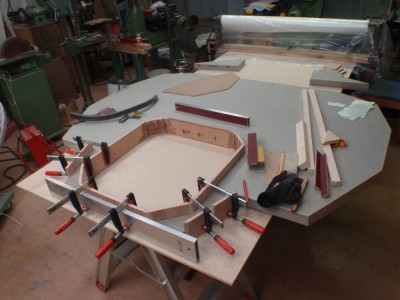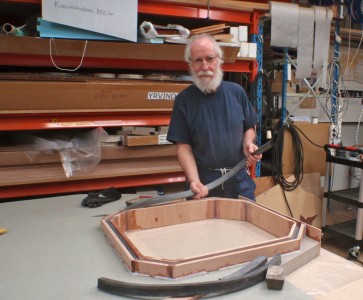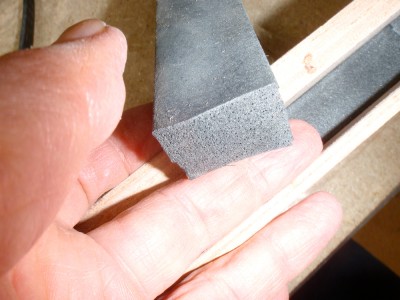Every housewife knows that her dishwasher and washing machine do not leak. Still yachtsmen accept leaking hatches. The technology to keep a boat dry in all weathers has been with us for nearly a hundred years. Its a question of gaskets. Not only that a yachtsman should be able to change a gasket even in wet and windy conditions in a few minutes.
This is how I do it. Instead of trying to replace a gasket using primer and glue. I place the gasket in a slot. I use big sections 2 by 3 centimeters epdm cell-foam (ethylene propylene diene monomer (M-class) rubber). The gasket should be slightly thicker than the slot and have big radius. Then it will stay in place without glue and be easy to change. Epdm-rubber is difficult to glue.
You need a lot of pressure to close the hatch. The circumference of the hatch in my main bulkhead is 240 cm. If you like to have one kilo per square cm that is something like a quarter of a ton.
Below are some pictures. The first one shows my main bulkhead. For ease of working I make the hatch with the bulkhead resting on a table. It is tempting to put up the bulkhead first to see some progress, but in the long run this is the faster way.
Next picture shows the slot made and me putting in the gasket.
Here is a close up of a piece of the gasket. The slot with gasket can also be seen.
It only takes a few minutes to replace a gasket using this method and it contributes to make the boat completely waterproof. A skipper sailing a boat with details like this do not have to worry about big waves.
To be continued…
Regards Yrvind.



